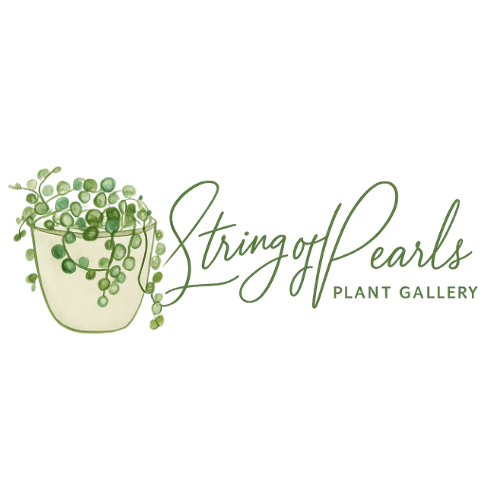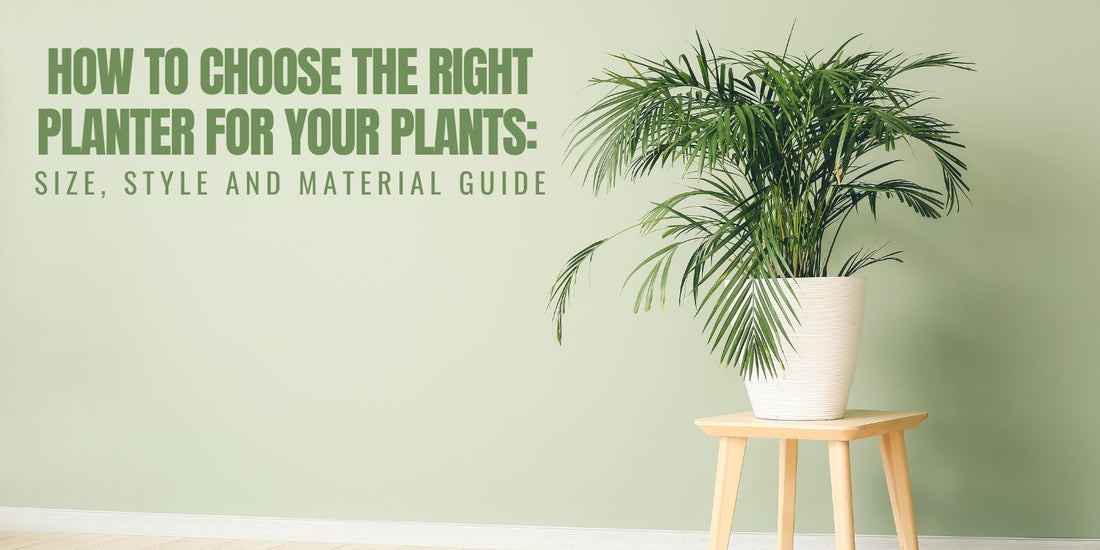Choosing the right planter is an essential step in creating a healthy and visually appealing environment for your plants. The right planter not only complements the aesthetic of your home or office but also ensures your plants have the optimal space and conditions to thrive. From size and material to style, there are a variety of factors to consider when selecting the perfect home for your plants. Here’s a complete guide to help you make the best choice.
1. Size: The Key to Healthy Growth
The size of the planter plays a crucial role in the growth and health of your plants. A pot that is too small can limit root development, while one that’s too large can cause overwatering and root rot.
- Small Plants: For smaller plants, like succulents or herbs, choose a pot that is 1-2 inches larger in diameter than the plant’s root ball. Smaller pots dry out faster, which is ideal for plants that don’t like to sit in moist soil.
- Medium Plants: For medium-sized plants like pothos or snake plants, choose a pot with a diameter that’s 2-4 inches larger than the plant’s current size. This allows enough room for growth without overwhelming the plant.
- Large Plants: Larger plants, such as rubber plants or fiddle-leaf figs, need larger pots to accommodate their root systems. Opt for planters that are 4-6 inches larger in diameter than the root ball.
- Tip: Avoid going up too many pot sizes at once. A gradual increase allows the plant to adapt, prevents excess water retention, and promotes healthy root development.
2. Style: Complement Your Space and Plant
The style of the planter can significantly impact the overall look of your plant and its surroundings. Whether you prefer a modern, rustic, or minimalist design, the planter should enhance both your space and the plant itself.
- Modern Style: Sleek, geometric planters made from materials like metal or ceramic are perfect for contemporary homes or offices. These planters often have clean lines and minimalist aesthetics that highlight the plant’s natural beauty.
- Rustic Style: If you love a more natural, earthy feel, choose planters made from terracotta, wood, or distressed ceramics. These styles work well in homes with a cozy, farmhouse-inspired vibe.
- Bohemian Style: Woven baskets, macrame hangers, and colorful ceramic pots are ideal for creating a laid-back, boho aesthetic. These planters are perfect for plants with flowing, trailing vines like pothos or string of pearls.
- Eclectic Style: Mixing and matching different planter styles, materials, and colors can create a fun and dynamic look. Don’t be afraid to experiment with bold patterns, bright colors, or unique shapes.
- Tip: Consider the size and shape of the plant when selecting a planter style. Tall, slender plants look best in narrow planters, while bushier plants benefit from wider, low-profile pots.
3. Material: Durability and Functionality
The material of the planter not only affects its appearance but also plays a role in the plant’s health and care needs. Here’s a breakdown of popular planter materials and their benefits:
- Terracotta: Terracotta pots are porous, allowing air and moisture to flow through the walls of the pot. This makes them ideal for plants that prefer drier conditions, like succulents and cacti. However, they may need more frequent watering since they dry out quickly.
- Ceramic: Glazed ceramic planters are stylish and come in a variety of colors and designs. They retain moisture better than terracotta and are great for plants that require more consistent watering, like ferns or calatheas.
- Plastic: Plastic planters are lightweight and affordable, making them a practical option for both indoor and outdoor plants. They retain moisture longer than terracotta or ceramic, making them suitable for plants that need consistent moisture.
- Metal: Metal planters offer a modern, industrial look but can heat up quickly in direct sunlight, which may damage the roots. Metal planters are best used indoors or in shaded outdoor areas.
- Wood: Wooden planters bring a natural, rustic feel and are great for larger plants or outdoor settings. Be sure to choose treated wood or line the planter with plastic to prevent rot from moisture.
- Concrete: Concrete planters are durable and heavy, making them ideal for large plants or outdoor use in windy areas. They offer excellent stability and insulation but can be difficult to move once placed.
- Tip: Ensure that your planter, regardless of material, has drainage holes to prevent water from sitting at the bottom and causing root rot.
4. Drainage: A Must for Plant Health
Proper drainage is essential for keeping your plants healthy. Without drainage holes, excess water can accumulate in the pot, leading to soggy soil and root rot. Most plants prefer well-draining soil, and using a pot with drainage holes ensures that excess water can escape, promoting better root health.
- Tip: If your planter doesn’t have drainage holes, consider using a plastic liner with holes inside the decorative pot or adding a layer of stones or gravel at the bottom to create a drainage buffer.
5. Portability: Consider Weight and Mobility
For larger plants or those that may need to be moved indoors or outdoors seasonally, the weight of the planter is an important consideration. Planters made of concrete, ceramic, or metal can be heavy and difficult to move, while plastic, terracotta, or lightweight wood options are easier to transport.
- Tip: For heavy planters, consider placing them on rolling plant stands or using lighter inner pots within decorative outer planters for easier mobility.
Choosing the right planter for your plants is an important step in ensuring their health and vitality, while also enhancing the look of your home or office. By considering factors like size, style, material, and drainage, you can select planters that not only look great but also provide the optimal environment for your plants to thrive. Whether you’re growing succulents, tropicals, or large statement plants, the right planter will make all the difference.

